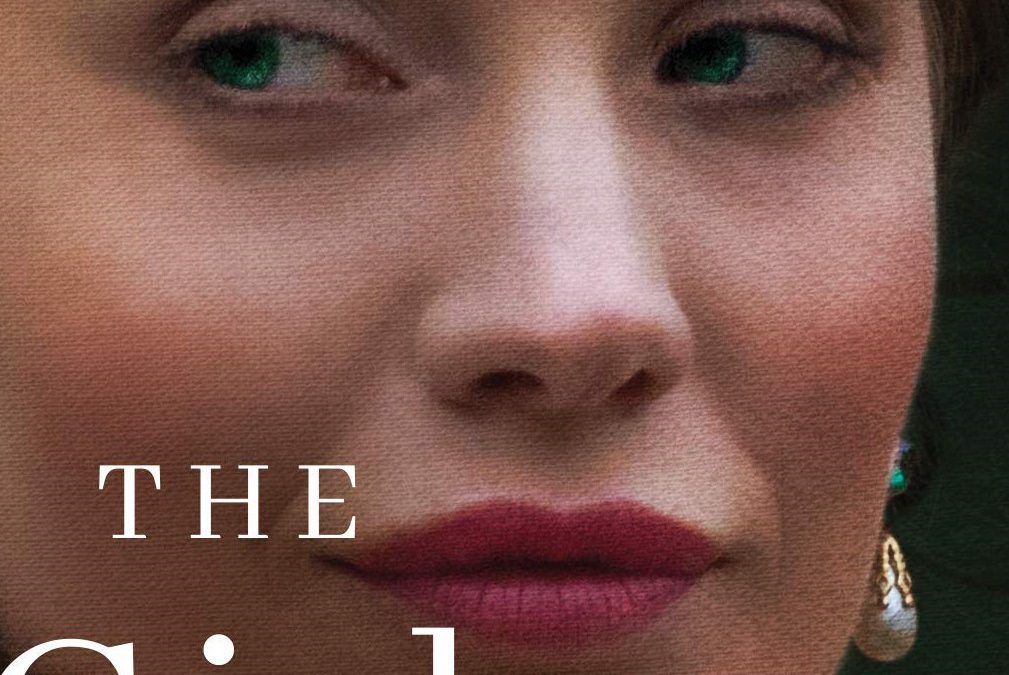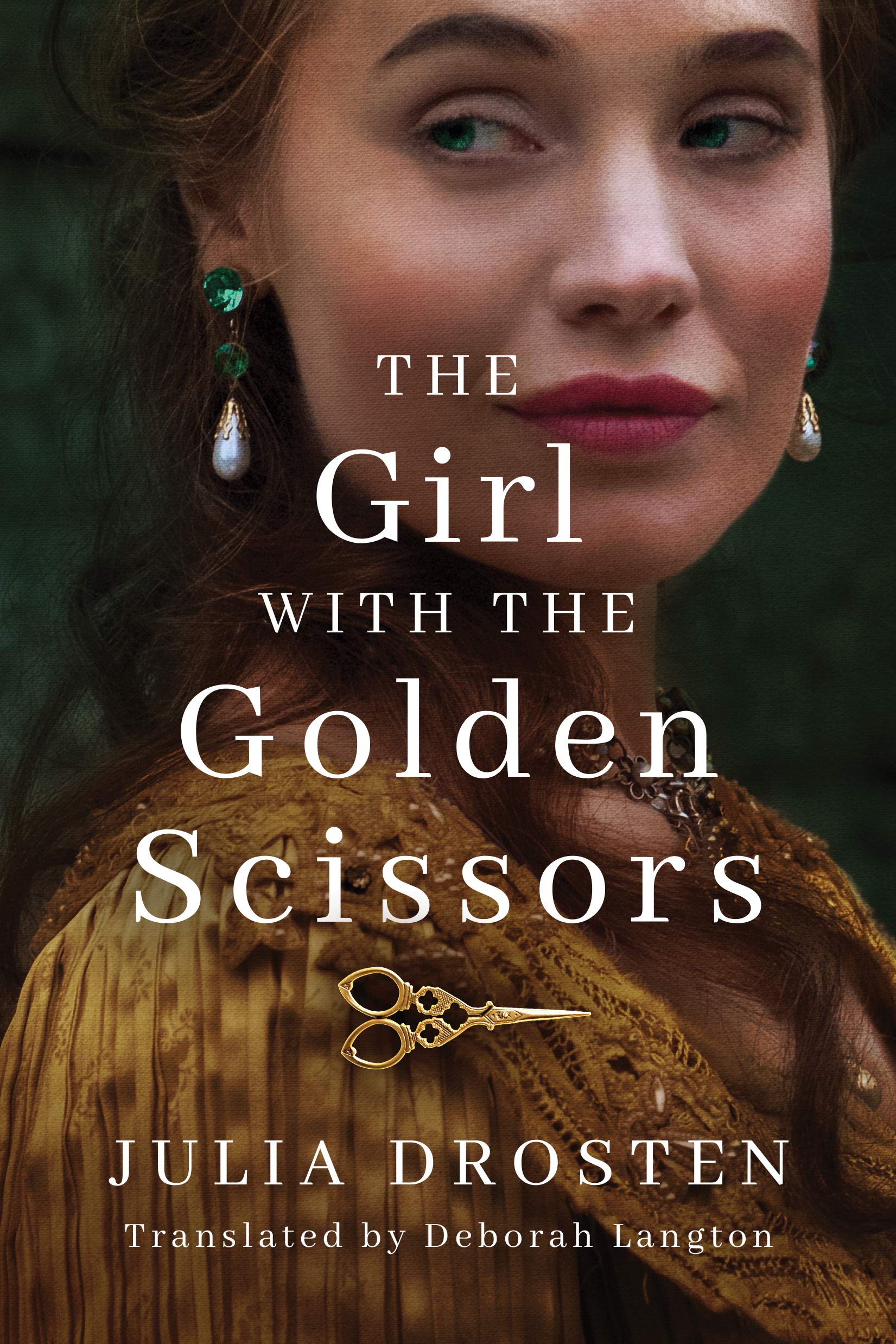
A Travel through Time: Horst and Julia Drosten explore life in Vienna and Budapest one hundred and twenty years ago
 We were in the middle of writing The Girl with the golden Scissors (original German edition Das Mädchen mit der goldenen Schere, published in 2017) when we travelled to Vienna and Budapest.
We were in the middle of writing The Girl with the golden Scissors (original German edition Das Mädchen mit der goldenen Schere, published in 2017) when we travelled to Vienna and Budapest.
Research is important to us because we want to give you – the readers an authentic view of the historical era and background of our story. The best way to achieve this is to visit the places, walk the streets, taste the food, breath the air of the cities or countries where the action happens.
For The Girl with the golden Scissors we visited Vienna and Budapest, the capitals of Austria and Hungary. In the Middle Ages the Habsburg dynastie took the imperial crown of the Holy Roman Empire and their rulers transformed both cities into glamorous residences. Today vistors still admire the great number of gorgeous baroque palaces, churches or boulevards and feel the spirit of former times.
Our story is set at the end of the Danube Monarchy. Arts, music and literature prospered, the nobility lived in splendor and also the middle classes were relatively wealthy, but the working classes still suffered from great poverty and women were not allowed to vote.
Our maincharacter – Fanny Schindler – emanates from the lower classes and on our journey we followed her steps.
Fanny’s mother gave birth anonymously in the General Hospital and abandoned her daughter. More than two hundred years ago emperor Josef II. installed a special hospital ward where mostly unwed girls and women could anonymously give birth and leave their children to public welfare. The pregnant women entered the hospital through the pregnants gate hidden at the end of a narrow alley. This gate still exists and it was the first place we visited in Vienna.
Very close to the hospital, in Alser Strasse 23 the Foundling House was located. Here the weakest of the babies grew up while the majority was put into the care of foster families. The Foundling House was torn down at the beginning of the last century and a business house erected instead, but the school Fanny visited still exists. The Josefinum is a convent school where Fanny learns not just reading, orthography and maths but also housekeeping. As a child from the lower classes she has to work for her living as a maid in wealthy households.
One of her employers is a jewish merchant’s family in Budapest. Fanny is hired as the personal maid of the daughter Izabella Kálman. We modelled the familiyhome after Palais Festetics in Budapest which today accomodates the Andrássy University. The Festetics are of ancient lineage. Countess Marie Festetics was for many years a favorite lady in waiting of Empress Elisabeth.
In Budapest we explored many places where Fanny worked or enjoyed life – the Redoute Ballroom for example and the Opera, where we booked a guided tour. We admired the auditorium which is covered in gold leaf and listened to a wonderful aria from La Traviata. In our story Fanny has an exciting encounter in the opera-house during a fancy-dress ball.
We also visited Gerbeaud one of the best addresses for delicious cakes and choclates. The Austro-Hungarian Monarchy was famous for it’s desserts. Many of the old recipes are still in use and they are just awesome – we tested it at Gerbeaud in Budapest and in Vienna’s famous Sacher. In Fanny’s time both were purveyors of the court.
Austria is also known for it’s wide range of coffee-specialities. Each has it’s own funny name which refers to austrian lifestyle and tradition. The Little Cup of Gold (mocha), the Small or Large brown Coffee (mocha with cream or milk), One-Horse-Carriage (mocha with clotted cream) or Fiacre (mocha with lots of sugar, rum or fruit-brandy) are just a view examples.
After some time in Budapest Fanny returns to Vienna and starts to work in an exclusive fashionhouse on Graben-Street. Graben-Street still is Vienna’s most famous shopping-street and was home to many purveyors of the court. Here you found the best and most expensive shops. Customers came from the nobility and the rich bourgoisie. It’s landmark is the Holy-Trinity-Column which was erected in 1679 by emperor Leopold I. after a devastating-epidemic of the Plague.
The highlight of our travel was our visit of Schönbrunn-Palace, where we learnt about the lifestyle of the Habsburg-dynasty. Emperor Franz Joseph I. who leaded Austria-Hungary into World War I., died there in the middle of the war, leaving his countries and citizens in tumultous times. This first catastrophe of the 20th century also plays an important role in our story and you can experience pain, cruelties and hunger through the eyes of Fanny and our other characters.
When we returned home after two intense weeks we took many unforgettable impressions and memories with us. Now we would like to invite you to travel with Fanny, Max, Josepha, Izabella and all the others back to the exiting times of the Danube-Monarchy and live, love, suffer and hope with our characters and maybe you might also like to watch our little slideshow with photographs and waltz music.
